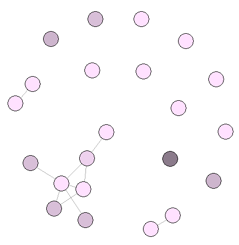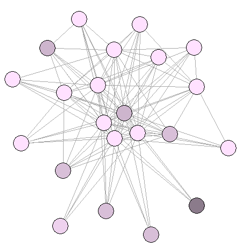My name is Alicia Stachowski and I am an Associate Professor of Psychology at the University of Wisconsin, Stout. I am working with Sue Ann Corell Sarpy on a Citizen Science Program sponsored by the National Academies of Science. We would like to share some preliminary findings from this research.
Lessons Learned:
Why Use Citizen Scientists?
In the aftermath of a disaster, communities often lack information about environmental contamination that could be used to guide prevention and recovery activities. Community-led citizen science, where lay individuals or non-experts lead or participate in data collection and research activities, offers great promise for promoting equitable, cross-boundary collaborations, fostering scientific literacy, and empowering community-based actions around environmental risks.
Building a Network of Citizen Scientists
The Citizen Science Training Program was designed to build organizational capacity and enhance community health and well-being through promotion of citizen science in coastal Louisiana communities. The training program was aimed at developing a network of citizen scientists for environmental contamination monitoring, creating avenues for communication and dissemination of project activities to stakeholders, and strengthening collaborative partnerships to enable sustainable networks for knowledge, skills, and resources. Our evaluation includes a social network analysis of the existing and developing relationships among participants.
How Does a Citizen Scientist Networks Develop?
The project is designed to create and support Citizen Science networks. We used Social Network Analysis to examine the emergency of these networks. Our project is on-going, but the following figures show an example of our preliminary findings:
We asked participants to indicate who they know, who they share information and resources with, who they discuss community issues with, who they go to for advice, and who they collaborate with. Our preliminary results illustrate an increase in ties, or connections among participants (i.e., network density). For example, respondents indicated which other participants they discussed community issues with before and after training. Before the survey, network density was 4% (see Figure below).
Pre-training ties among participants coded by parish regarding with whom they discussed community issues with.
Following the survey, network density increased to 45%.
Post-training ties among participants coded by parish regarding with whom they discussed community issues with.
Lessons Learned:
Although our project is still in progress, we have found critical factors that lead to success in building and enhancing Citizen Scientists’ Networks:
Diversity Among Trainees. We included a diverse group of participants. They varied in age, gender, race/ethnicity, and occupations.
Small Group Activities. The training included small group activities that encouraged information and resource sharing among participants.
Hands on Activities/Exercises. The training included hands-on activities and exercises in using the monitoring and testing equipment. These activities/exercises encouraged active participation and interaction among trainees.
Large and Small Group Discussion. The small group activities and hands-on exercises were followed by discussion among participants that allowed for exchange of different points of view.
Follow-up Field Research. The training culminated with participants identifying a community-based need that they are currently addressing using the knowledge, resources, and community capacity that was enhanced by the training.
The American Evaluation Association is celebrating Disaster and Emergency Management Evaluation (DEME) Topical Interest Group (TIG) Week. The contributions all this week to aea365 come from our DEME TIG members. Do you have questions, concerns, kudos, or content to extend this aea365 contribution? Please add them in the comments section for this post on the aea365 webpage so that we may enrich our community of practice. Would you like to submit an aea365 Tip? Please send a note of interest to aea365@eval.org. aea365 is sponsored by the American Evaluation Association and provides a Tip-a-Day by and for evaluators.


